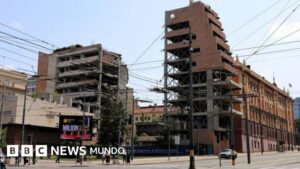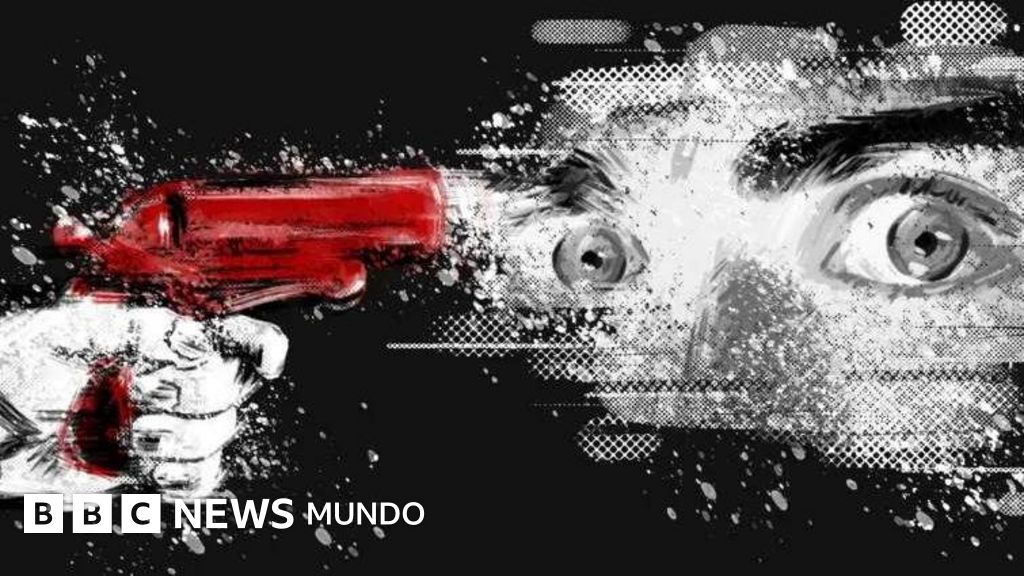
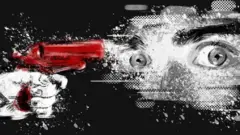
-
- Author, Amalia Zatari
- Author's title, Russian BBC service
At the end of last year, in the Russian medieval city of Kostroma, a teenager was shot in the face with a flags gun when he returned home from the projection of a film about a leftist activist.
The attack was allegedly perpetrated by a member of a local neo -Nazi group self -denominated made with hate (Made with hate).
This violent and politically charged act symbolized a growing trend throughout Russia.
Despite the repeated justification of the Kremlin of his large -scale invasion of Ukraine as a battle against “Nazism”, there has been a strong increase in neo -Nazi violence within Russia itself.
According to the SOVA Center, an organization based in Moscow that monitors crimes motivated by hatred, extreme right attacks in Russia increased more than double by 2023 compared to the previous year.
This occurs after a decrease in the previous ten years. Many of the perpetrators were under 16.
This new wave of extremism dates back to the 1990s and early 2000s, although it has not yet reached the murderous brutality of that chaotic period in which hundreds of attacks were produced a year after the collapse of the Soviet Union.
Then violence fed on the diffusion of clandestine extremist literature.
Now it is through social media platforms such as Telegram and Tiktok, where many Russian young people find and amplify the ideology of extreme right in digital spaces, often out of the reach of local security forces.
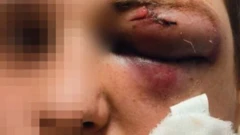
Image source, Antifa.ru
Dispostics -shaped graffiti
In Kostroma, a city of about 264,000 inhabitants located on the shores of the Volga River, in western Russia, a group of adolescents began communicating through a telegram messaging service channel in early 2024.
Initially, the Chat focused on organizing trips to soccer matches or casual matches.
But soon the group began to paint graffiti with swastika and other extreme right symbols throughout the city, according to an old member, Anton, who was 17 years old at that time and spoke with the BBC with the condition that his real name would not be used.
The teenagers called their band Made with Hate.
In last year's boreal summer, they had gone to physical violence.
“They gathered and everyone beat someone,” explains Anton, who tells the BBC that he left the group in October last year, after realizing that their opinions did not coincide with those of other members.
“They went out there, looking for drug addicts and alcoholics, and assaulted them. They were always hunting for people from left -wing movements,” he added.
The attacks were often filmed and published in Telegram channels, whose number of members grew rapidly. These came not only from Kostroma, but also from other Russian cities and in some cases – according to Ukraine and Poland.
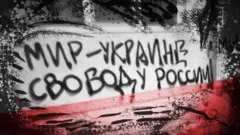
The attack
The person attacked at the exit of the projection of a film was Yaroslav (it is not his real name), a 17 -year -old who moved from Moscow to Kostroma to study jewelry.
In November 2024, he and a friend went to see a documentary about the murdered anti -fascist Ivan Khutorskoy, an activity organized to commemorate 15 years of his death at the hands of neo -Nazis.
When Yaroslav left, nine people who interrogated him about his political visions approached him, according to Antifa.ru, a telegram channel of the anti -fascist movement in Russia.
They took a gun from flares and Yaroslav was shot in the face.
The attackers dispersed, but the doctors of a nearby hospital could not save his eye. Yaroslav was forced to abandon his studies and live with his parents near Moscow. He didn't want to talk to the BBC.
Two days after the incident, the alleged aggressor, also 17 years old, was arrested and now faces more than a decade in prison accused of vandalism and causing serious body injuries with the use of a weapon.
According to Anton, the teenager was a member of the Made With Hate group, who had affiliated a few weeks before his arrest.
Another teenager was also arrested later in relation to the attack. Anton said the suspect was an outstanding figure of the neo -Nazi band.
Both suspects remain in pretrial detention.
Nostalgic brutality
The new neo -Nazis groups that arise in Russia, according to Vera Alperovitch, a researcher at the Sova Center, try to revive “the traditions and all types of violence developed in the 2000s.”
The shape of the perpetrated attacks reminds that of the neo -Nazis bands of decades ago. For example, the members of the band organize meetings with those who believe they are homosexual, as well as those who have labeled as “pedophiles” and “drug addicts”, in addition to the homeless, to attack them.
They also carry out “white cars”, a term with which the coordinated attacks against trains passengers are known.
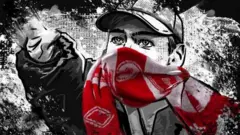
This is more about a need to capture the attention than about ideology, says Alperovitch. “The thirst for notoriety now plays a more important role than ever.”
In the circles of the ultra -right of the 2000s, he explains, the movement was directed by a neo -Nazi ideology. “These were intelligent people who read neo -Nazi literature and published their own magazines,” says Alperovitch.
The violence that entailed was a serious problem in Russia, with hundreds of hate crimes for racial reasons every year.
At the beginning of the 2010, the movement was effectively dismantled, with the help of order forces. Many of his key figures were sentenced to long prison sentences.
Now the activity of Nazis shaved heads in Russia increases again, but this subculture is still in diapers and has not yet been political and ideologically formalized, says Alperovitch.
“It's not about ideological fighters as before. Putin, war, United States … Everything is too complicated for them,” Alperovitch told the BBC.
“(There is only the idea that) there are migrants, we must hit them and make a video.”
The xenophobic rhetoric of Russian officials and state media is in the heart of the recent increase in attacks, as well as “the general militaristic bias of the Russian society,” he said.
“From time to time we find out about chats and channels of the ultra -right that a criminal case has been opened against this or that activist, or even against a group of activists, and that have been arrested,” says Alperovich.
“But the forces of the order do not announce it in the media, apparently trying not to attract attention to the fact that there is neo -Nazis in Russia. The Russian authorities, on the other hand, tell us that they only exist in Ukraine.”
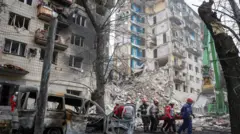
Image source, Reuters
Lack of belonging
The increase in extremist violence is not just a Russian phenomenon.
Paul Jackson, a professor at the University of Northampton in the United Kingdom, said that little moderate platforms such as Telegram have given the world's extreme right a “new and powerful dynamic.”
“Young people sometimes feel a lack of meaning in society and find responses to their frustrations in extremist content. Often, in the case of young men, hypermasculinity issues underpin these feelings,” said Professor Jackson.
Graham Macklin, a researcher at the University of Oslo, points out that the Middle Ages of the aggressors is decreasing.
Back to Kostroma, the neo -Nazi movement continues to grow despite the ongoing criminal causes.
“A year ago there were 15 people in the right -wing movement, including me, and now there are probably between 40 and 50 people, most adolescents,” Anton said.
Yegor, an anti -fascist Kostroma activist who did not want to give his last name, said he had put “fashionable and cool” join those extreme right bands.
“They want to fit, create an image of hard types.”
In April, Anton enlisted to fight for Russia in the large -scale invasion of Ukraine, although when he spoke with the BBC his reasons to do so seemed unclear.
“Basically, just because my father was a soldier,” he told the BBC, explaining that his late father had previously served in the restless southern region of Chechnya, which for a long time is the scene of a separatist conflict.
“I didn't get ready to defend anyone's ideas,” he said. “If they kill me, they kill me.”

Subscribe here To our new newsletter to receive every Friday a selection of our best content of the week.
And remember that you can receive notifications in our app. Download the latest version and act.


